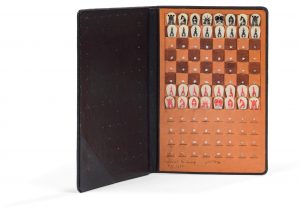Evolution of American Coinage: From Liberty Heads to Saint-Gaudens Double Eagles
Since the passage of the Coinage Act of 1792, the United States Mint has regulated and circulated currency celebrating American values and symbols. American coinage has evolved significantly since the 18th century, but many of the images survive today. The upcoming December 21st Colorado Conductor Coin Auction, presented by Gold Standard Auctions, examines this evolution of American coinage and brings over 500 antique specimens to the market. Here’s a closer look at some of the coins and designs featured in the catalog.

Seated Liberty Coinage
The first coins issued by the United States Mint prominently featured the profile of a woman with flowing hair, symbolizing the principle of Liberty. An eagle appeared on the reverse. This design evolved slowly through the late 18th and early 19th centuries, with Liberty later being shown with a draped cloth across her chest and a turban-like cap on her head. Starting in 1836, these designs were set aside in favor of a new style depicting Liberty seated on a rock and holding a striped shield. Seated Liberty coinage was produced through 1873.
Several Seated Liberty coins will be available with Gold Standard Auctions in the upcoming December 21 sale. This includes an 1848-O Seated Liberty half dollar coin, which comes to auction with a presale estimate of USD 355 to $10,000.

Morgan Dollars
Among the most famous American coin patterns is the Morgan silver dollar. This replaced the Seated Liberty dollar style following the passage of the controversial Coinage Act of 1873 (which effectively created a gold standard and temporarily abolished the standard silver dollar). The Mint wished to update the silver dollar design and worked with a young George Morgan to do so. Already an established artist and engraver at the age of 30, Morgan refreshed the depiction of Liberty on American coins by using an American woman as a model instead of typical figures from antiquity. The resulting Morgan dollars were produced until the silver bullion supply ran low in 1904.
Morgan dollars produced in the late 19th century will be available with Gold Standard Auctions this December, including an example from 1883. This silver dollar includes an ‘S’ mint mark, indicating that it was created at the San Francisco Mint. It has a presale estimate of $80 to $10,000.

Saint-Gaudens Double Eagle
In the early 1900s, President Theodore Roosevelt grew interested in updating and beautifying American coinage. He invited the renowned Beaux-Arts sculptor Augustus Saint-Gaudens to create a coin design that evoked the elegance and power of ancient Greek and Roman coins. Saint-Gaudens created a high-relief design that depicted the figure of Liberty striding forward with a torch and branch in her hands. On the reverse was an eagle flying before a rising sun. Today known as the Saint-Gaudens double eagle ($20), this coin is widely considered to be the most beautiful American coin ever minted. It was issued from 1907 to 1933.
Rare examples of Saint-Gaudens double eagle coins are available in the upcoming sale. Each includes a grade from the Numismatic Guaranty Company (NGC) and comes to auction in a clear collectible case. A 1927 Saint-Gaudens double eagle gold coin is particularly notable (estimate: $2,105 – $10,000).
Each of these lots, antique American coinage, foreign coins, and other numismatic collectibles will be available with Gold Standard Auctions. The December 21st Colorado Conductor Coin Auction will begin at 6:00 PM EST on December 21, 2023. Visit Bidsquare to view the complete catalog and register to bid.
Looking for more coverage of this event? Find additional information on Auction Daily.










